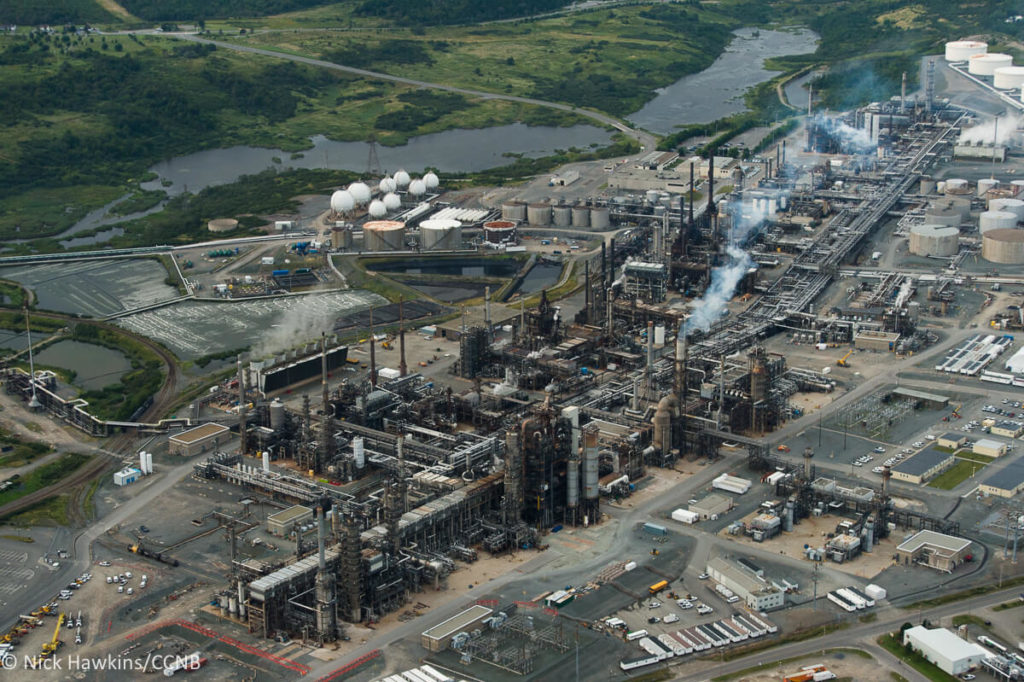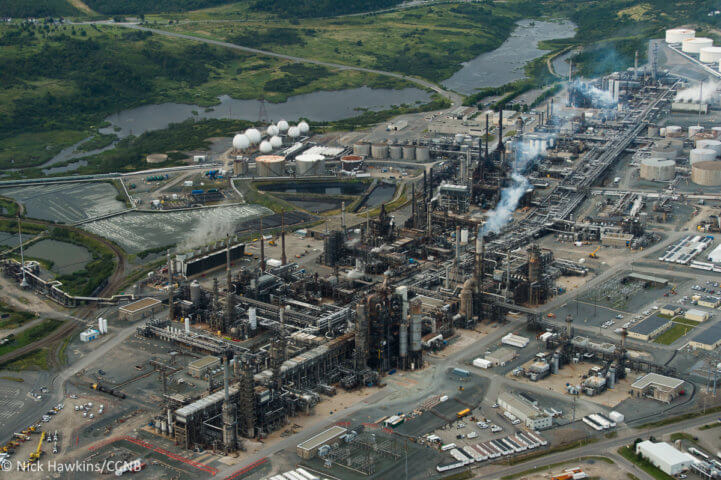
The federal government is proposing regulations to reduce emissions from Canada’s biggest polluters.
Catherine McKenna, the Minister of Environment and Climate Change, announced regulations to reduce methane emissions and air pollution from the oil and gas sector on May 24.
This could be welcome news for residents of Saint John, home to Canada’s biggest oil refinery, Irving Oil. We’re working with our friends at the Citizens’ Coalition for Clean Air in Saint John, who will be delving into the details over the next few weeks.
The proposed Regulations Respecting Reduction in the Release of Volatile Organic Compounds would require companies to put in place comprehensive LDAR (leak detection and repair) programs, upgrade equipment to further prevent leaks, and monitor the level of some Volatile Organic Compounds (VOCs) found at the edges of their facilities.
VOCs are air pollutants that often mix with other pollutants in the atmosphere to form smog. They are present in all phases of the oil and gas sector, from extraction to refining to end use. VOCs contain carcinogens and are known to contribute to a wide range of human health and environmental problems.
In 2009, the Conservation Council conducted a study on cancer patterns in 14 urban and rural communities in New Brunswick, which showed lung cancer rates in Saint John were 50 percent higher than in Fredericton.
The federal government estimates that the proposed regulations would reduce the emission of VOCs by 102 kilotonnes, and methane emissions by 43 kilotonnes, between 2017 and 2035.
The regulations were published in the Canada Gazette, Part 1 on May 27, launching the start of a 60-day comment period where Indigenous peoples, provincial, territorial and municipal governments, industry and interested citizens are encouraged to submit feedback to the Minister.

